Open data represents an opportunity for cities to reach universal accessibility. It shows the missing links of the mobility chain.
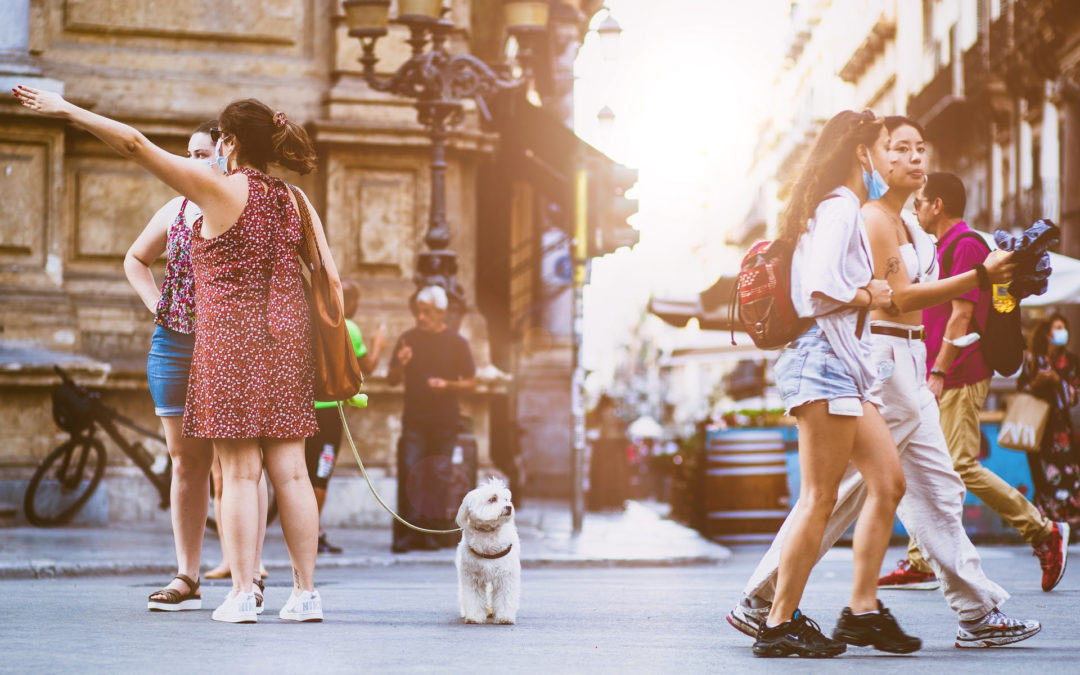
Should We Say “Hybridization” or “Inclusion” Regarding People with Disabilities? | Interview of Gabrielle Halpern, Doctor of Philosophy
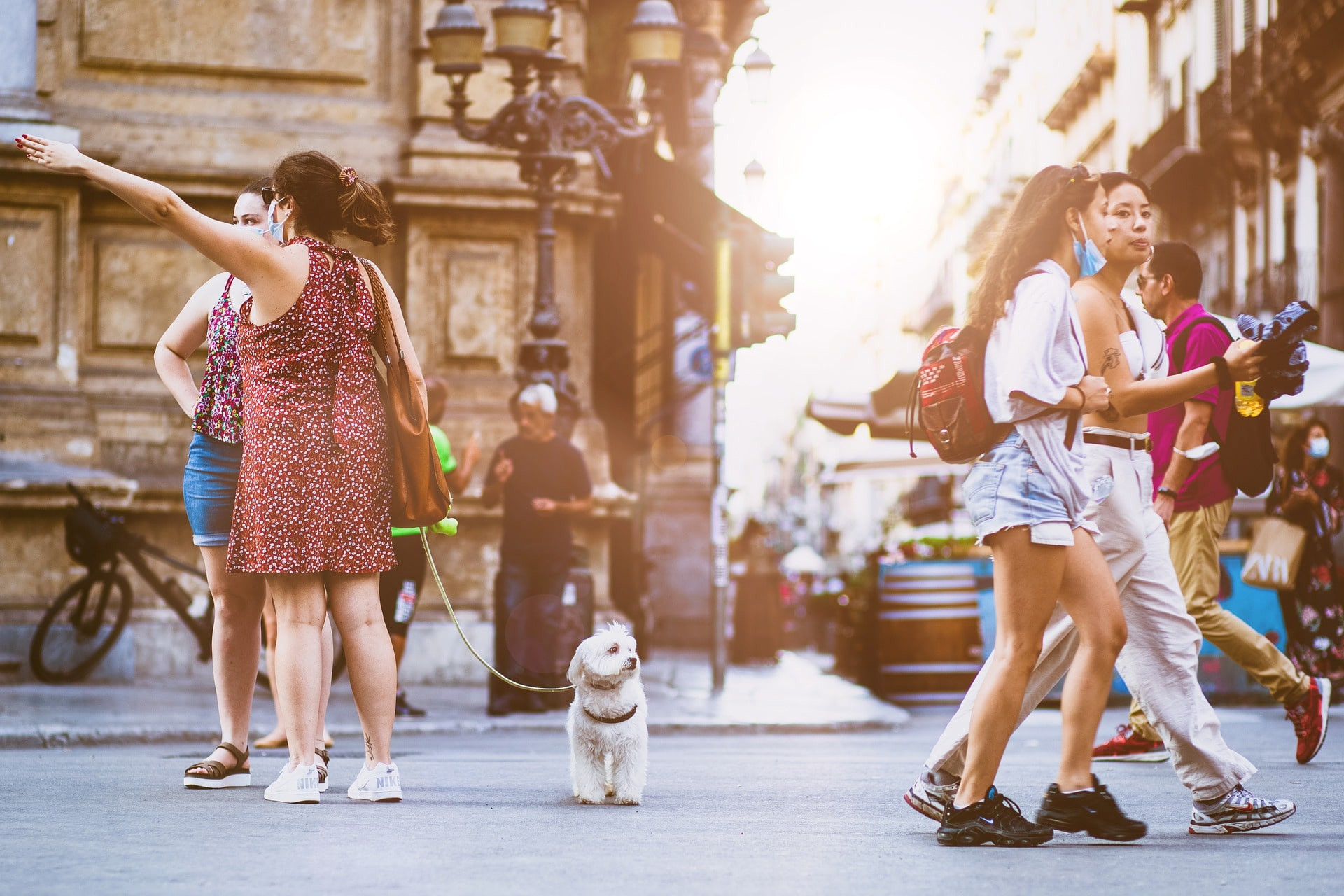
Should We Say “Hybridization” or “Inclusion” Regarding People with Disabilities? | Interview of Gabrielle Halpern, Doctor of Philosophy
As accessibility experts, we often talk about inclusion to explain that our society should be built to suit the needs of everybody, regardless of their abilities or disabilities. We came across an article* by French Doctor of Philosophy, Gabrielle Halpern, in which she entirely rejects the term “inclusion” to favor “hybridization”. Indeed, we were appalled at discovering that the etymology of the word “inclusion” didn’t exactly match our values…
But should we use the term “hybridization” instead? Gabrielle Halpern has been doing some research about this particular notion that comes from the figure of the centaur: the mythological creature from Ancient Greece, half-human and half-horse. When Dr Halpern states that we are all centaurs, she means that we are all hybrids: we all are several different things. This implies that we are not made to fit in society’s norms but that society should embrace our diversity, our hybridization. This can make it stronger and definitely better.
Discovering that “inclusion” may not be the best word to use when we talk about accessibility, we asked Dr Halpern to tell us more about hybridization. Let’s dive into this fascinating subject! You’ll probably find out you are a centaur too (and that’s great)!
Hello Gabrielle Halpern, can you introduce yourself in a few words?
I’m a centaur! More precisely, I have a PhD in Philosophy. I graduated from Ecole Normale Supérieure (French research university) and I currently work as a research fellow there. Simultaneously, I worked for several years at different cabinet ministers where I was in charge of forward planning and speeches. Then I joined a startup incubator to work with young entrepreneurs and guide them to develop their activity. And now I advise companies and public institutions while actively pursuing my works in philosophy. I have a foot in each world to try and progressively build bridges between them, – hybridizations –, despite their obvious contradictions and their difficulties to connect together… I define myself as a centaur because this “half-human, half-horse” figure is the ultimate hybridization. This is the reason why I dedicated my philosophy thesis and my essay “Tous centaures ! Éloge de l’hybridation” (only available in French at Le Pommier, 2020) to centaurs. To me, hybridation isn’t just a research project, I intimately live it and I see it as a vision of the world, a society project I wish I could contribute to build.
We questioned ourselves thanks to an article you wrote in HUFFPOST, “Don’t say ‘inclusion’ anymore when you talk about disabilities”. For us, inclusion means taking into account the specific needs of everybody, including those with disabilities. Why are you opposed to the term “inclusion” and why do you prefer talking about “hybridization”?
The term “inclusion” is more and more employed but this common noun is derived from the Latin word inclusio which meant “imprisonment”. This referred to the seclusion of hermits and monks. We don’t realize it but this analogy is awful! When a child is born in a family, do we really talk about inclusion, insertion or integration? No we don’t! And there’s a reason for that! When a child is born, everything changes: the balance of power, everybody’s identities, the interactions between all those involved, the external relationships, the way we look and don’t look at each other or even the way we put ourselves in relation to others. There’s no integration, insertion nor inclusion… There’s hybridization! Meaning there’s an encounter that makes everybody step out of themselves. If we go back to the figure of the centaur, – the figure of the ultimate hybridization –, this is precisely what came into play: the human and the horse had to step aside to create this unifying third figure that the centaur is. Yes, the encounter can only take place when all interested parties metamorphose. Concerning people with disabilities, whether they have a physical or intellectual disability, it would be awful to include them, as if they had to be content to have the place we’d grant them, – taking into account the whole effort they’d provide to adapt –, as long as it doesn’t interfere with our practices. We need to understand that the real challenge is our ability to accept to step aside and to leave our comfort zone. The disability that the other has, because it’s outside the norm, because it “transgresses” the absurd box we’ve built and lived in, awakens our fear of the unknown. Let’s stop being afraid and let’s hybridize ourselves! By doing this, we’ll metamorphose our management skills, our organizations, our jobs, our recruitments, our professional relationships and our innovations!
Instead of talking of an inclusive society, we should rather talk of a society that’s turning into an hybridization seeing that it’s not just about including all of those who are different, physically or mentally, but to create the conditions of an encounter that enables a reciprocal metamorphosis. At companies, public institutions, schools, colleges and universities, research labs, restaurants, associations and clubs – everywhere! –, it’s urgent not only to give a place to those who don’t fit in our box but to accept to let ourselves be transformed by them. It’s not up to them to fit in our box; it’s us who need to leave our box seeing that after all, we are the ones imprisoned, included, isolated!
Isn’t it paradoxical: societies are actually hybrid (without knowing it) but want to remain homogeneous at all cost?
Your question is very interesting! I’d say that a major part of reality is hybrid. This part gets bigger and bigger and concerns a lot of fields in our lives. Of course, from a biological and cultural point of view, we all are hybrids, – without truly realizing it –, but societies work as silo structures, with independent identities, independent communities, because of this drive towards homogeneity that works both at an individual and collective level.
A few words on this idea of a “drive towards homogeneity” that I developed in my research work: in concrete terms, this drive leads us to only keep company with people who look like us, to only be interested in what we already know, to only follow social media accounts that match ours. Thus we build ourselves surrounded by a homogeneous bubble. This drive makes us seek this absurd notion of “purity”; it makes us homogenize everything and everybody we meet so that we don’t have to accept their otherness, their difference. This drive, that can reassure us and give us a feeling of protection, is within everyone of us and it’s difficult to resist it. Everyday we work to fight against it; the boulder of Sisyphus that we constantly have to haul at the mountaintop. Intrinsically, because of our fear of uncertainty, we have an inability to fully and naturally accept singularity, diversity, alterity. In his work, Crowds and Power, one of the greatest European thinkers of the XXth century, Elias Canetti tells us that above all the human being fears being in touch with the unknown, and that all distances, all the behaviors he adopts are dictated by this phobia. It’s only within this standardized mass that he thinks he can be liberated from this phobia. Thus this is what happens: the emergence of communities, groups, founded on an identity principle and whose members are identical to each other. Any element, any person, any odd or heterogeneous idea, is repelled and rejected, because it can be perceived as a threat against this reassuring homogeneity that the group has built and in which it took refuge and imprisoned itself. It’s in accordance with this drive towards homogeneity that the human being has always worshipped identity – from the Latin identitas, “quality of what is the same” – and has always been wary of everything hybrid around him.
How is hybridization a chance for our society?
First of all, a definition: hybrid embraces what’s heterogeneous, contradictory, blended, imperceptible; it’s everything that doesn’t fit in our box. Hybridization represents the unlikely marriage, that is to say the encounter between things, people, jobs, ideas, worlds that all are radically different. But for this encounter to happen, for hybridization to truly take place, it’s not enough to put them next to each other, we need to work to make their metamorphosis reciprocal.
The world is indeed more and more hybrid and this major tendency concerns almost all the areas of our lives… Take cities for example: revegetation projects are multiplying, urban farms, vegetable gardens, livestock farming on building rooftops are developing to such an extent that the boundary between the city and the countryside tends to become more and more slight. The box “city” is exploding. This hybridization of nature and urbanism takes place in parallel with the one between the products and services provided by companies. If we used to be in an industrial city and now we live in a society of services, it’s becoming difficult today to tell the difference between both. They turn into a hybridization of what we could call a society of practices or a society of relationships. These innovations through hybridization are going to disrupt companies, jobs, fields, markets and the very notion of competition. Schools, colleges and universities, research labs, companies, public administrations are starting, everywhere and more and more, to enhance collaboration; which increases the number of double degrees, confuses job descriptions and jobs and upsets the organizational models and the professional identities. COVID-19 emphasized these hybridizations, metamorphosing our ways to work on-site and remotely. The box “work” needs to be completely rethought. The same applies for objects. They can also form hybridizations: the smartphone, to take the most trivial example, is also an alarm clock, a radio, a scanner and a camera. Paradoxically, it gives us a space/time for leisure and work and it’s all of that at the same time. Regarding territories, we see that “third places” are multiplying: quirky places that regroup economical and services activities, with research, startups, arts and crafts, social innovation or even cultural infrastructures. Besides, companies are more and more aware of their societal responsibility; and social and fair trade economy, the ultimate hybrid economy – since it’s about hybridizing economical logics and social and fair trade logics – could indeed become tomorrow’s economical model. Our ways of buying and doing business also follow this tendency towards hybridization and we see new types of shops emerge where it’s not just about selling and buying, but also playing, improving our knowledge, coming together…
To me, this hybridization we witness represents the positive sign that we’re starting to tame our fear of the unclassifiable and that we’re finally ready to give up our old reassuring categories. The health crisis speeded up even more this tendency. But this tendency was at play even before the virus came into our lives. This hybridization that’s speeding up can make us optimistic regarding the future!
Little by little, we’re starting to realize that hybridization can be a chance for individuals, companies and public institutions, as for society. It makes us better, smarter, less intolerant, less dogmatic, more humble and more agile. My book is an invitation for us to reconcile with reality, thanks to this hybrid way of thinking.
With the digital era, we see that the services provided, the products sold and information are all hyper-personalized. Despite everything, it seems like it all goes in the right direction, isn’t it?
Indeed now is the time for a tailored-made approach and personalization; the trend becoming more and more about not following the trend. Companies, formed until now by the industrial society, were based on the norm: the herd instinct consumerist approach. Here again, the drive towards homogeneity was at play! It’s the famous quote by Henry Ford: “You can have it in any color you want, as long as it is black.” The whole industry was founded on the belief in homogeneity. But today, things are changing and the car of the future, the truly hybrid car, will be the one designed on singularity; which for me I see as excellent news! Some could think that hyper-personalization is going to reinforce individualism; I’m convinced of the opposite. Individualism often happens when individuals don’t feel respected in their singularity and feel the group is a threat; from the moment when they can finally express it, the group regains meaning. Thus we need to be glad about this weak signal that echoes hybridization: hybridization is the contrary of standardization… In other words, every centaur is unique and this uniqueness is sacred!
Would you like to say more?
Deep down, we know that we all are centaurs. We’re impossible to grasp, contradictory, quirky, in perpetual metamorphosis… So it’s time to accept ourselves as the centaurs we are! So let’s not be afraid of unlikely marriages: let’s hybridize ourselves and everything!
Who is Gabrielle Halpern?
She has a PhD in Philosophy. She graduated from École normale supérieure and is currently a research fellow there. Gabrielle Halpern worked at different cabinet ministers, before helping develop startups and advising companies and public institutions. She also has training in theology and exegesis of religious texts. Her research work focuses particularly on the hybrid notion. She is the author of “Tous centaures ! Éloge de l’hybridation” (only available in French at Le Pommier, 2020). (You can visit her website www.gabriellehalpern.com).
*French article published in HuffPost
Published on 9th July 2021
media
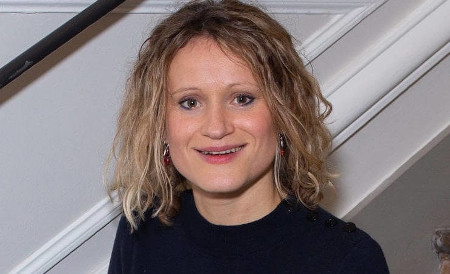
We need to understand that the real challenge is our ability to accept to step aside and to leave our comfort zone. The disability that the other has, because it’s outside the norm, because it “transgresses” the absurd box we’ve built and lived in, awakens our fear of the unknown.
writer
Christine Pestel
Communication Manager
stay updated
Get the latest news about accessibility and the Smart City.
other articles for you
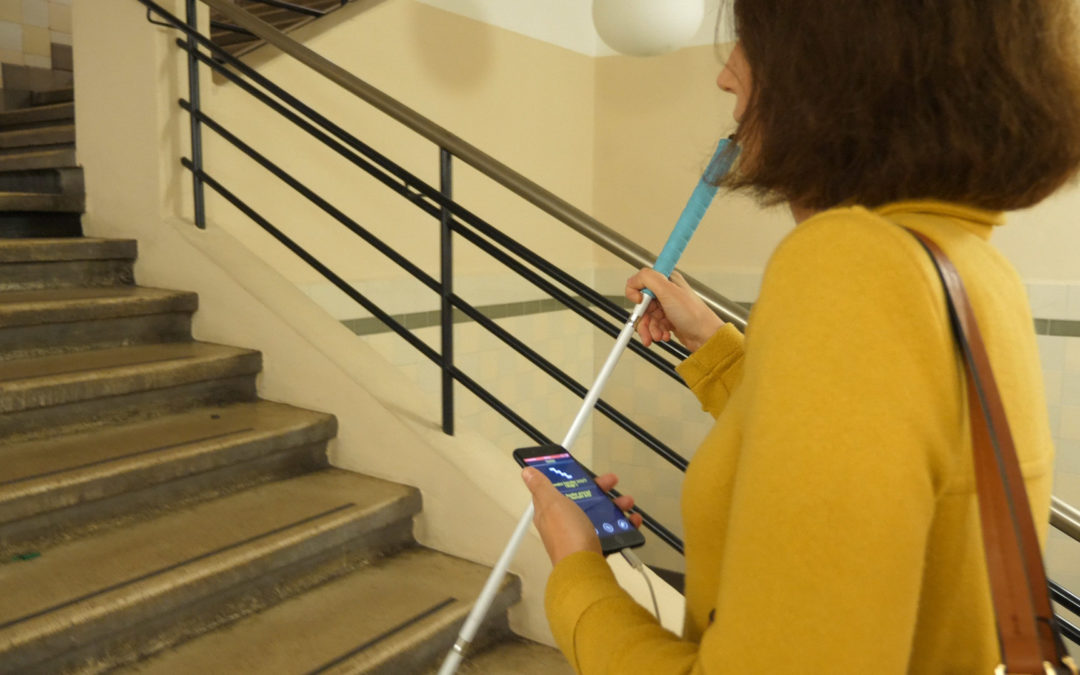
How Does a Blind Person Use Their Smartphone to Improve Their Mobility?
The smartphone has revolutionized the mobility of blind and visually impaired people.
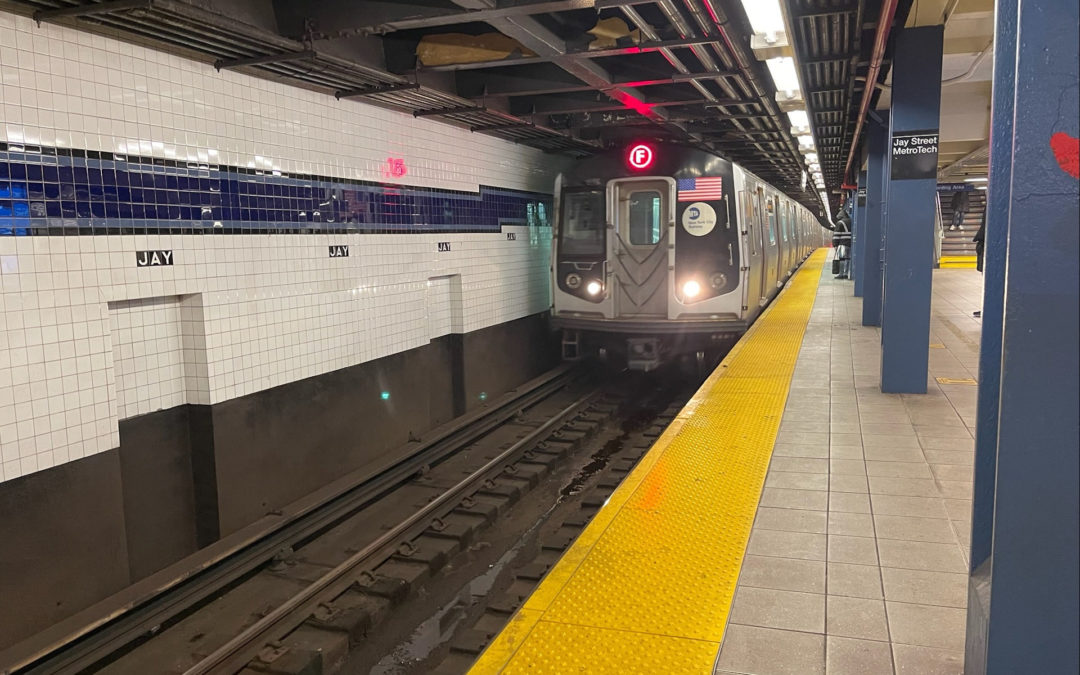
How to Foster Inclusive Mobility at Public Transit?
What inclusive mobility solutions can improve the accessibility of public transit? Are they cost-effective? The answer lies with phygital…
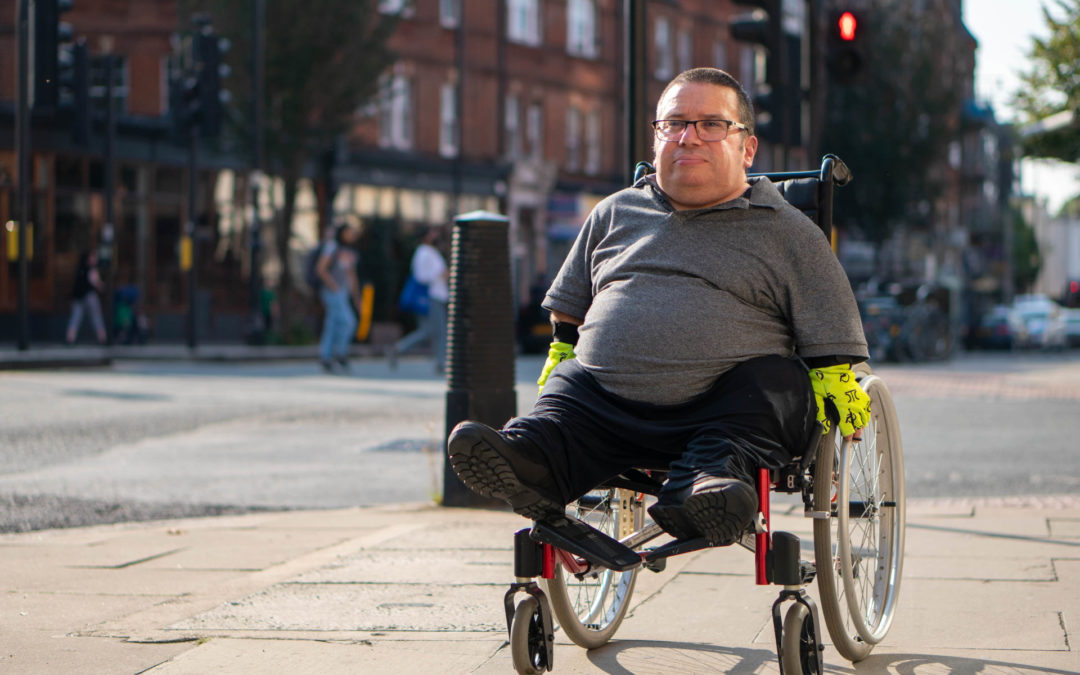
Paratransit Services for People with Disabilities: Yes You Can Reduce Their Costs
Public agencies spend millions of dollars for paratransit services. But a cost-effective solution could make public transit more accessible for riders with disabilities.
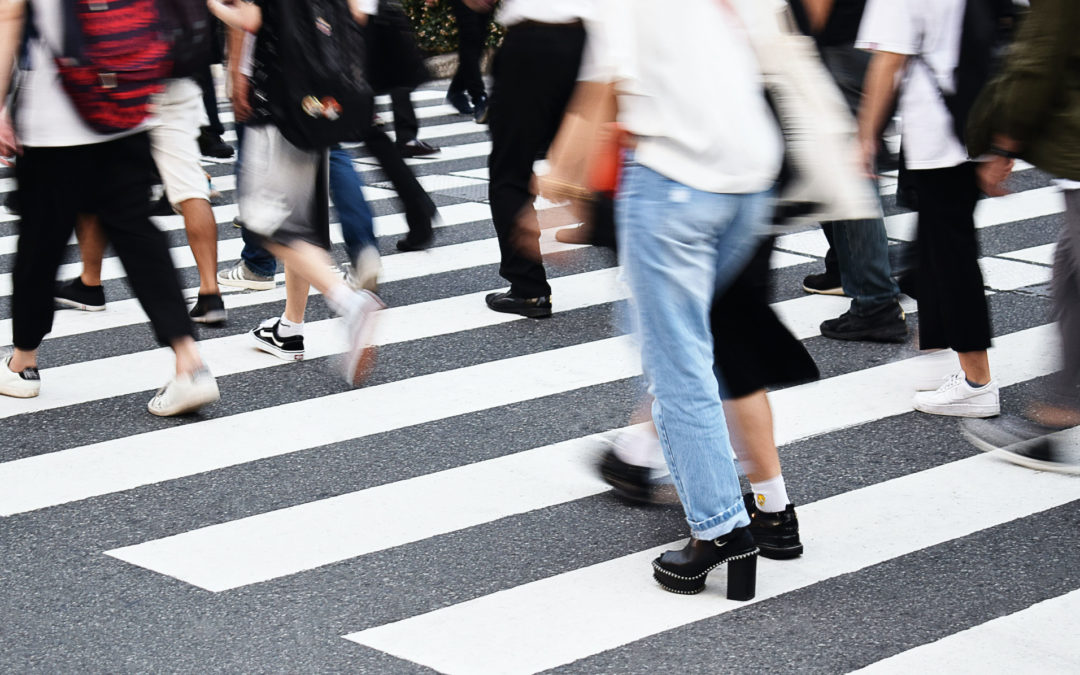
The Crosswalk: Thousands of Years of Evolution
Did you know the first crosswalk emerged in the city of Pompeii more than 2000 years ago? Check out how it has evolved since Antiquity!
share our article!
more articles
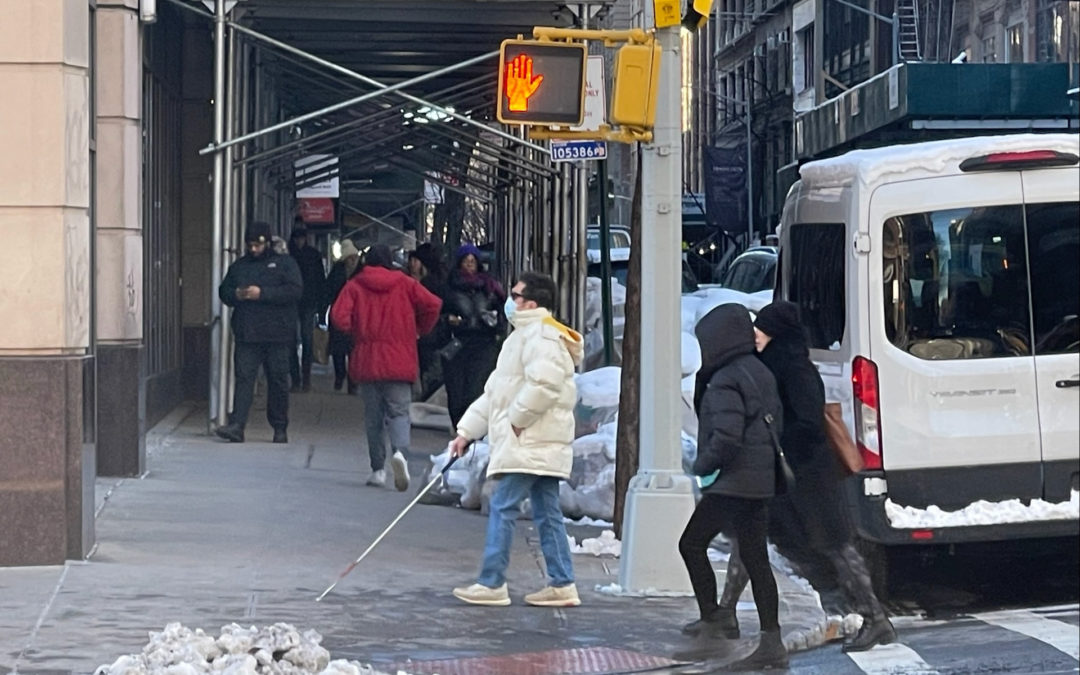
Blindness, Low Vision, What Are the Different Forms of Visual Disability?
Blindness, Low Vision, What Are the Different Forms of Visual Disability? Approximately 12 million American people are affected by a visual disability and no less than 253 million people in the world. Who are they? What are their needs? How can we facilitate...
7 Good Reasons to Install Audio Beacons at Your Public Transport Network
7 Good Reasons to Install Audio Beacons at Your Public Transport NetworkHave you heard of audio beacons? It’s probably one of the most effective solutions to help blind and visually impaired people find their way in a complex venue. In a public transport system, audio...
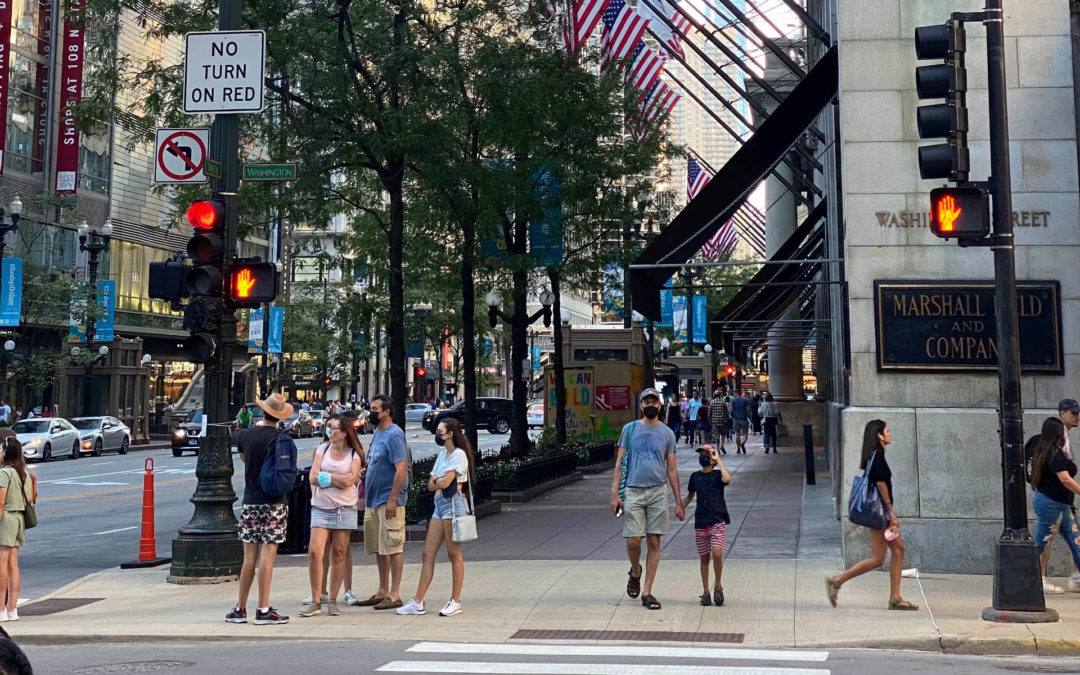
Blind and Visually Impaired Pedestrians: What Are Their Difficulties When Crossing the Street?
Blind and Visually Impaired Pedestrians: What Are Their Difficulties When Crossing the Street? Blind and visually impaired pedestrians can face many obstacles and challenges when they navigate the streets, especially for crossing them. Abled pedestrians cross...

What You Need to Do to Ensure Accessibility for Deaf People at Public Venues
What You Need to Do to Ensure Accessibility for Deaf People at Public VenuesIf your venue welcomes and receives people then accessibility for deaf people isn’t something to take lightly! How can your venue be accessible to the hearing impaired? What do you need to...
NEVER miss the latest news about the Smart City.
Sign up now for our newsletter.
Unsubscribe in one click. The information collected is confidential and kept safe.
powered by okeenea
The French leading company
on the accessibility market.
For more than 25 years, we have been developing architectural access solutions for buildings and streets. Everyday, we rethink today’s cities to transform them in smart cities accessible to everyone.
By creating solutions ever more tailored to the needs of people with disabilities, we push the limits, constantly improve the urban life and make the cities more enjoyable for the growing majority.



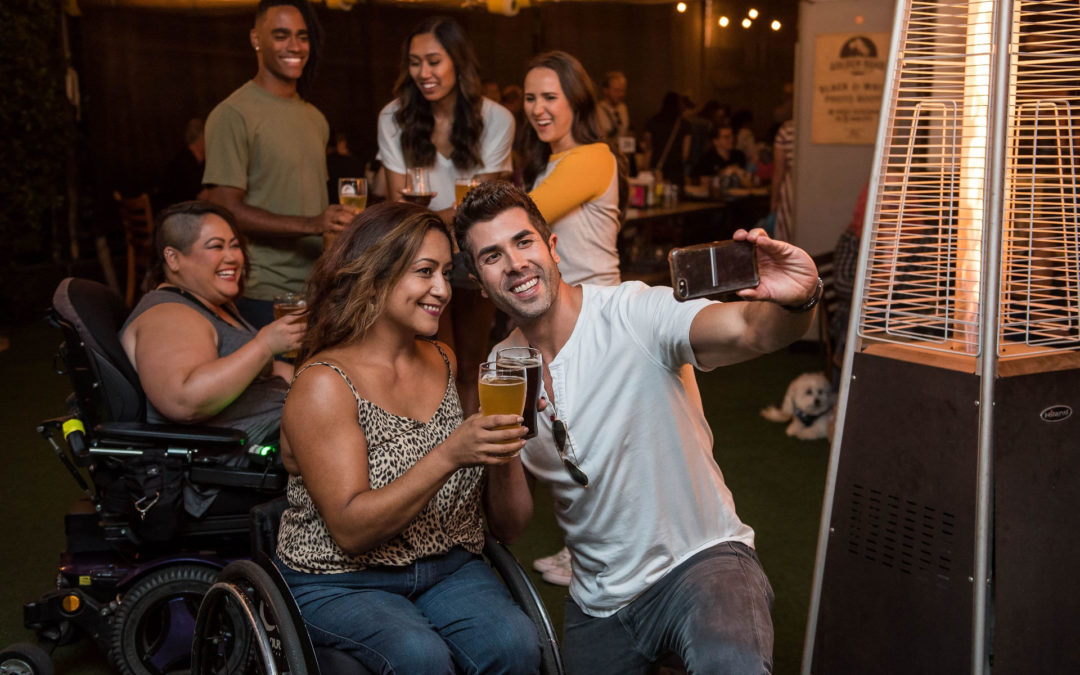
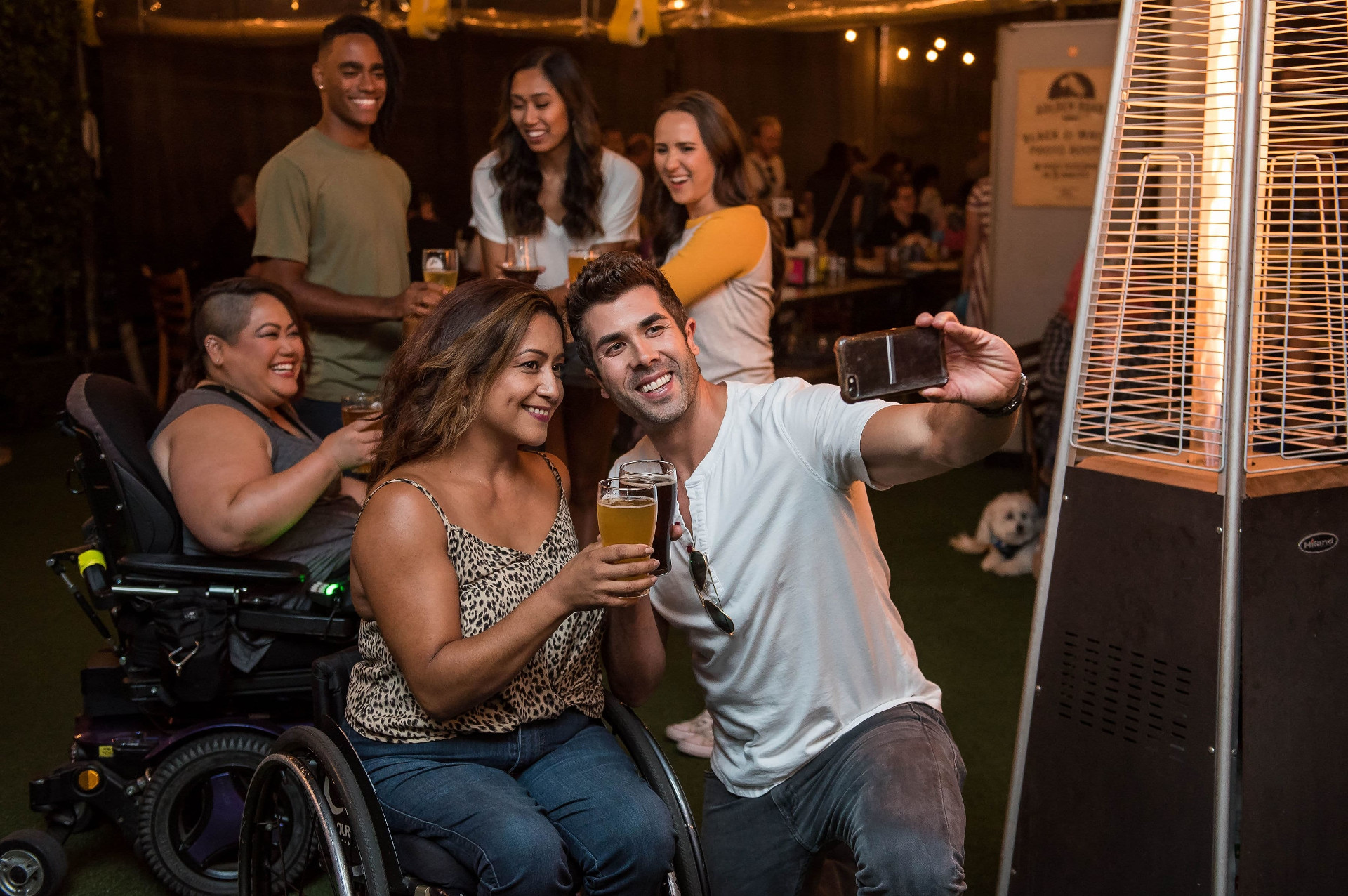
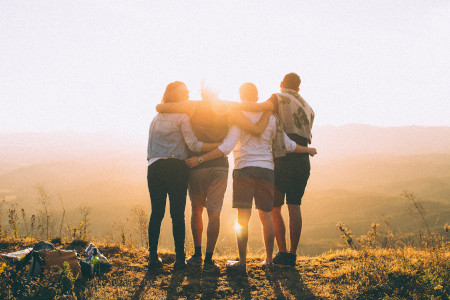

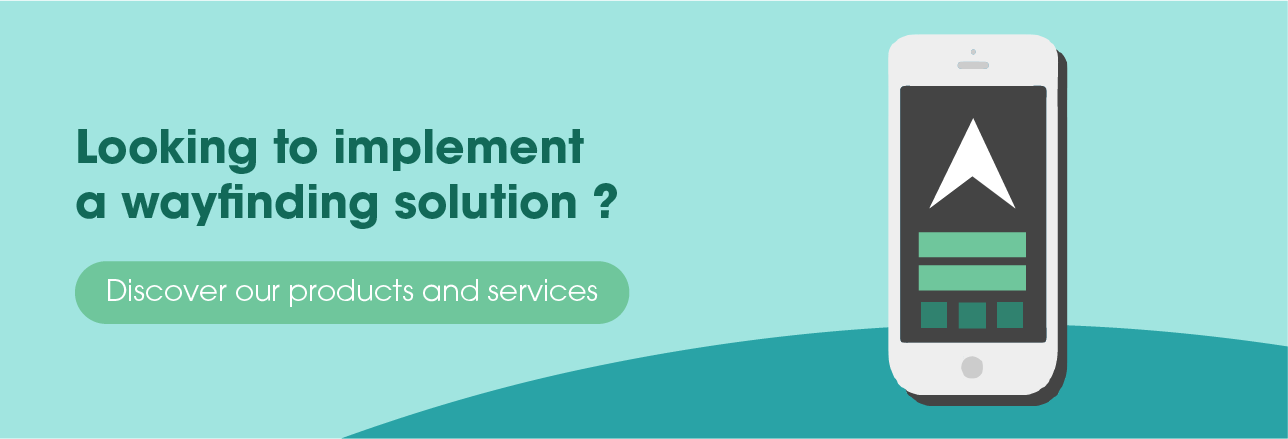
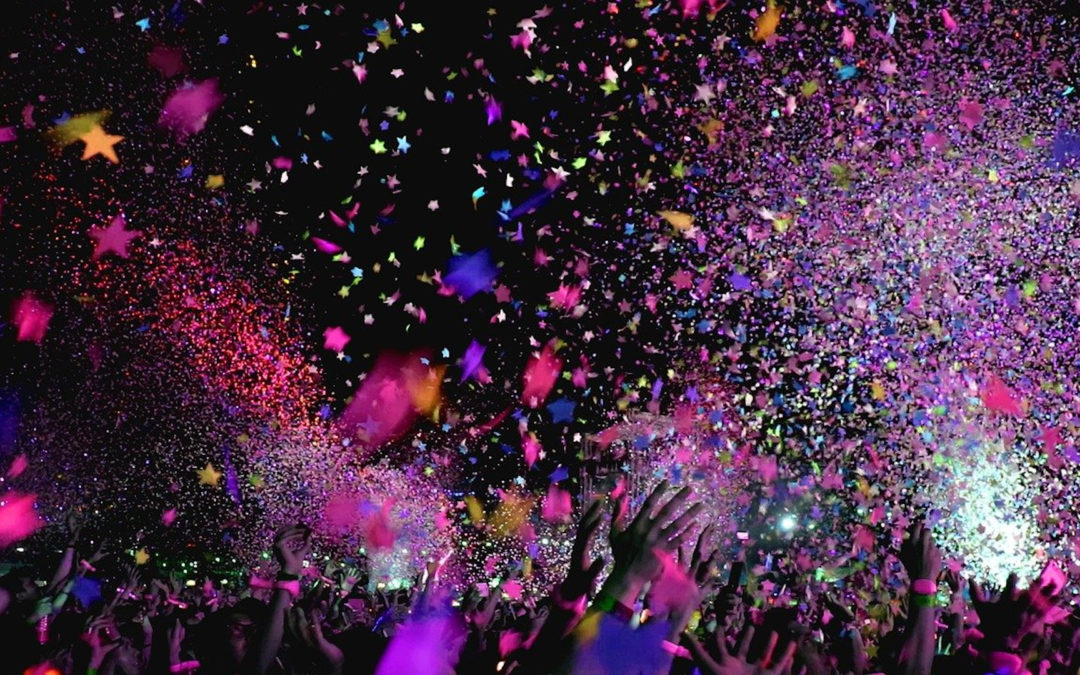
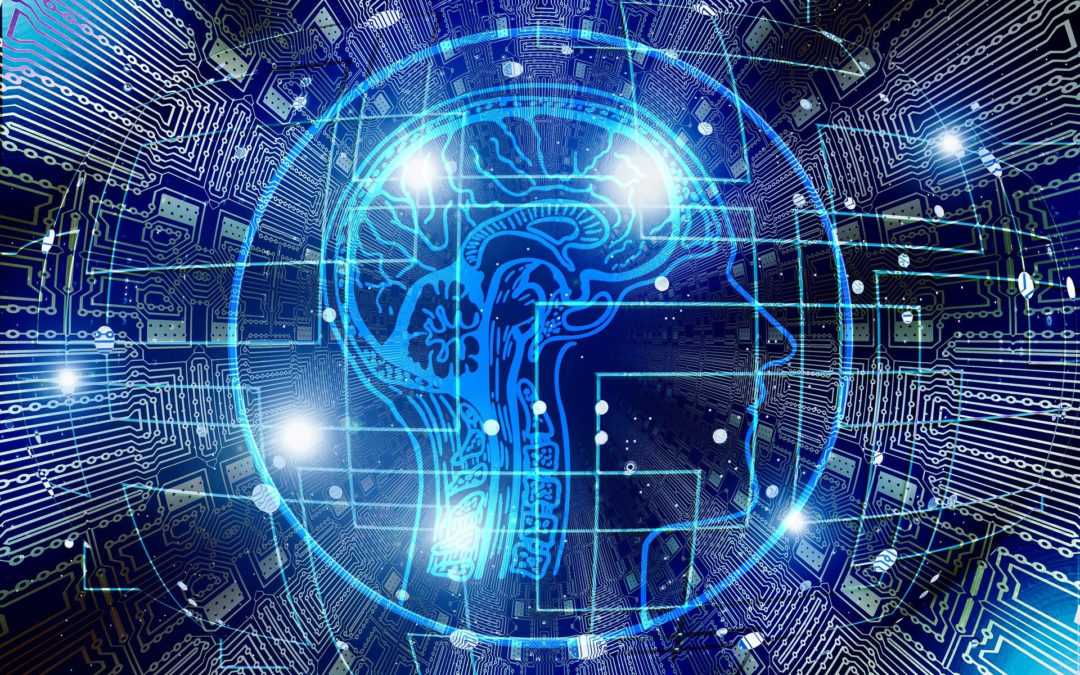
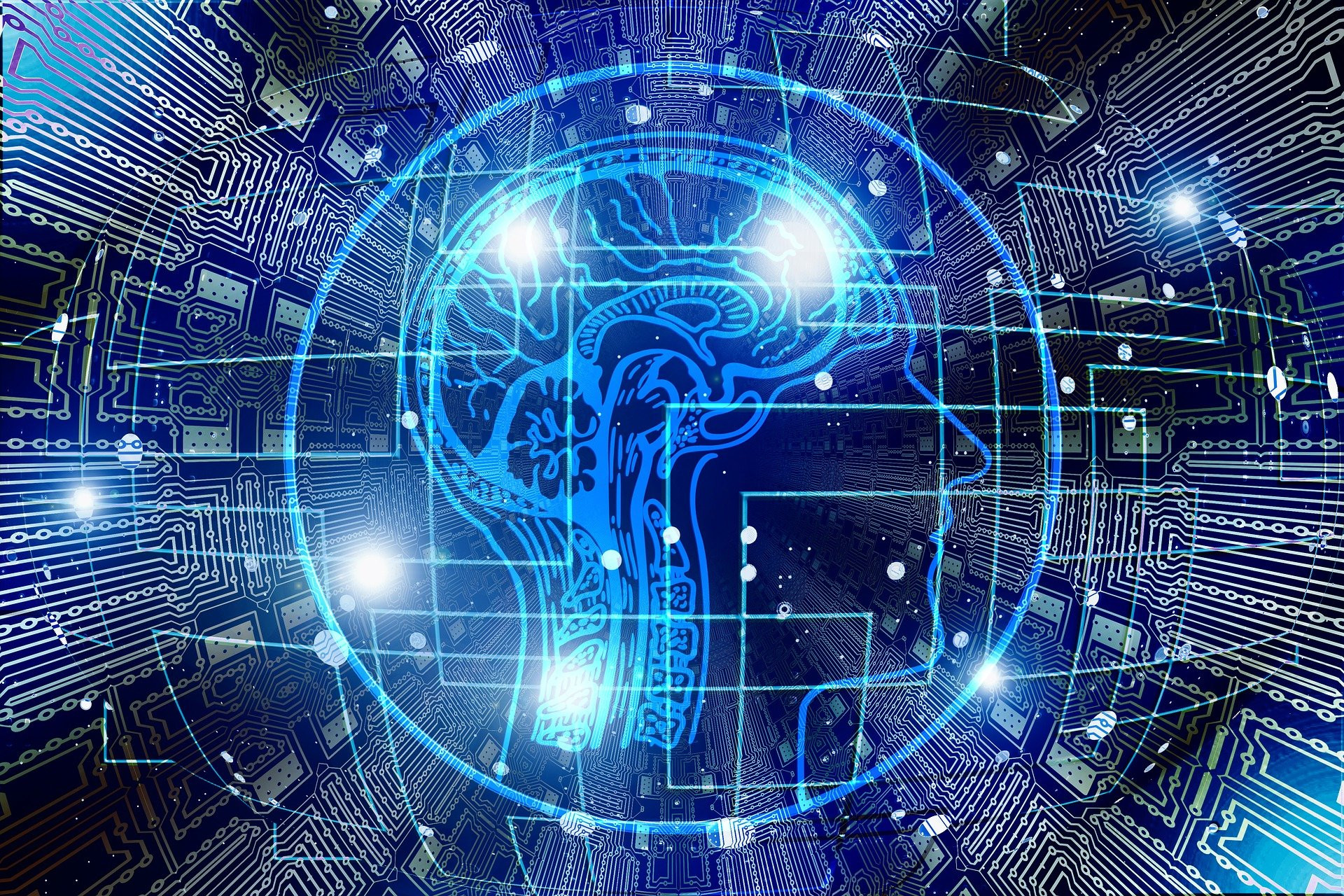
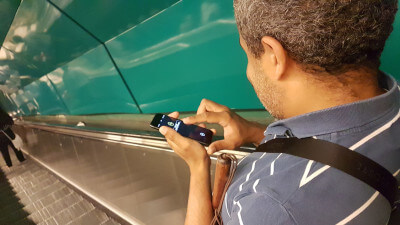

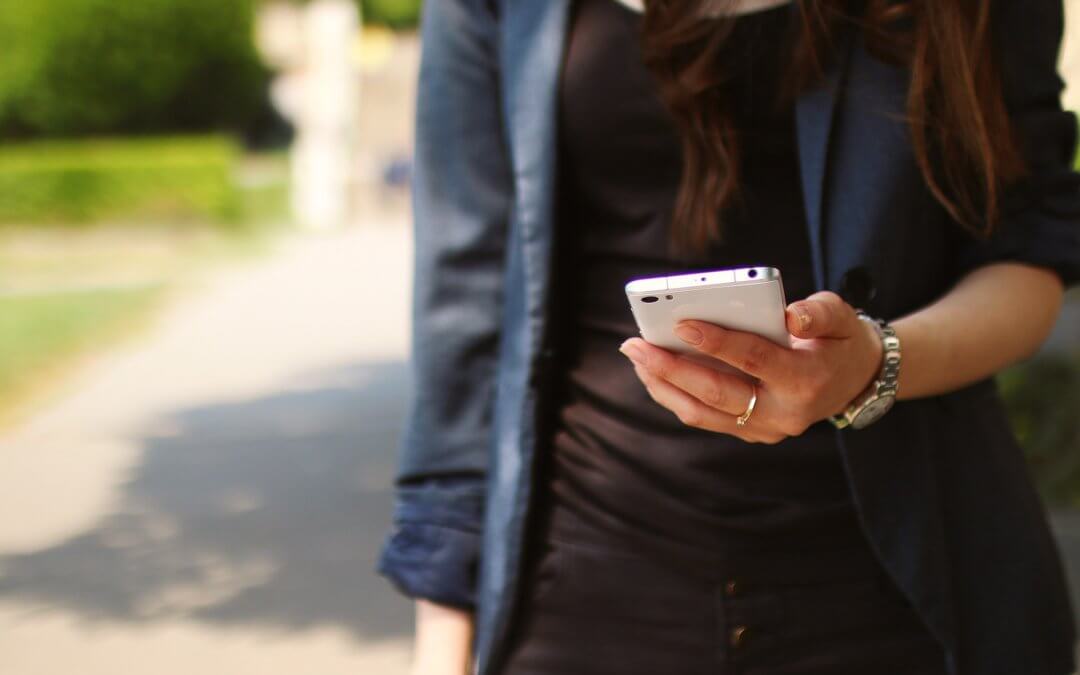
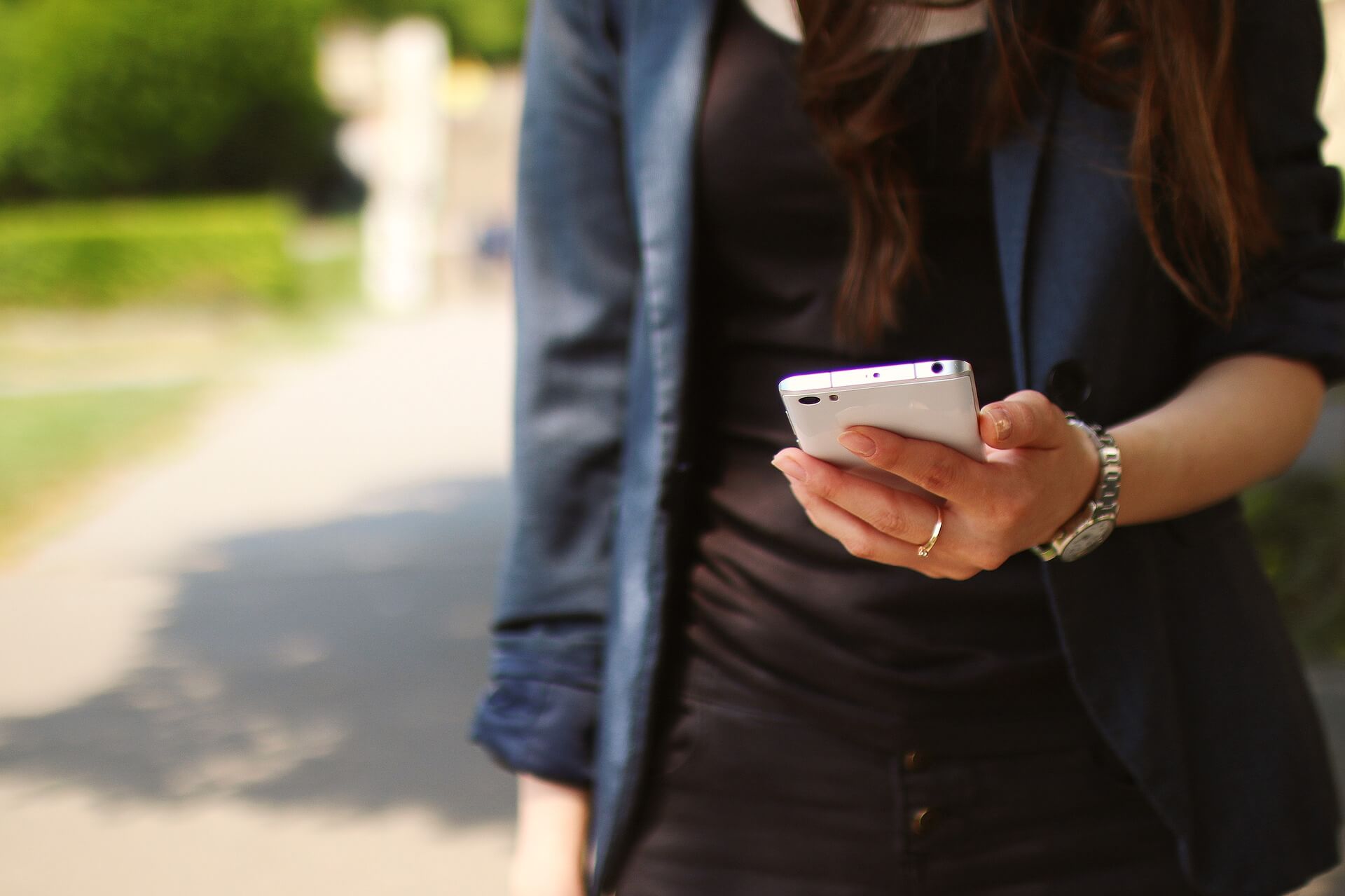
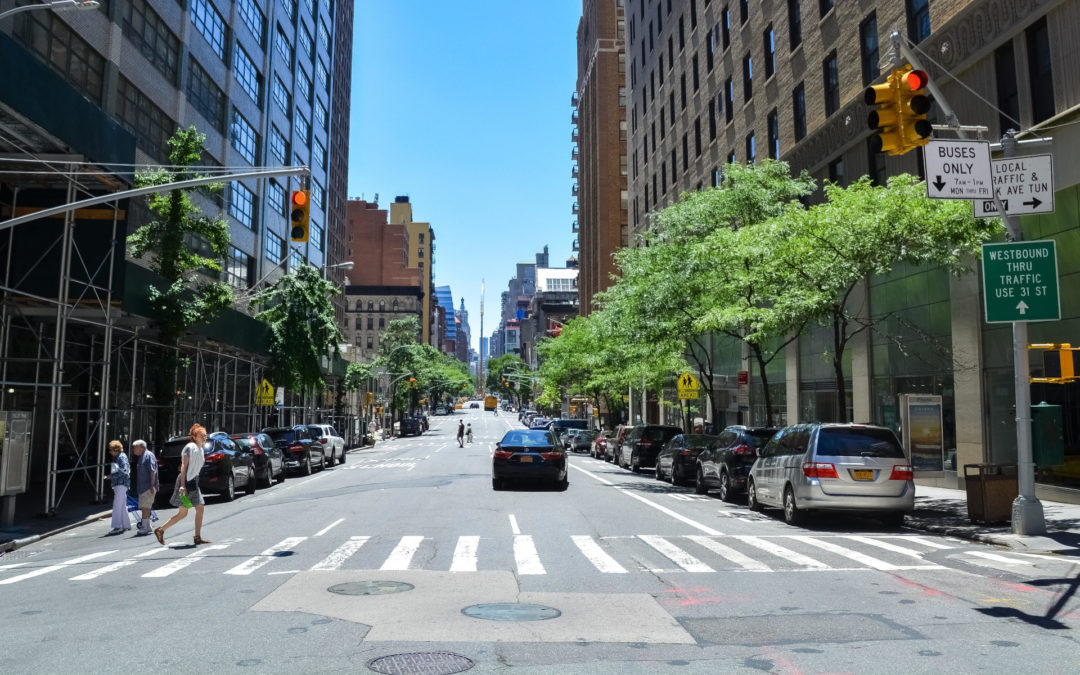
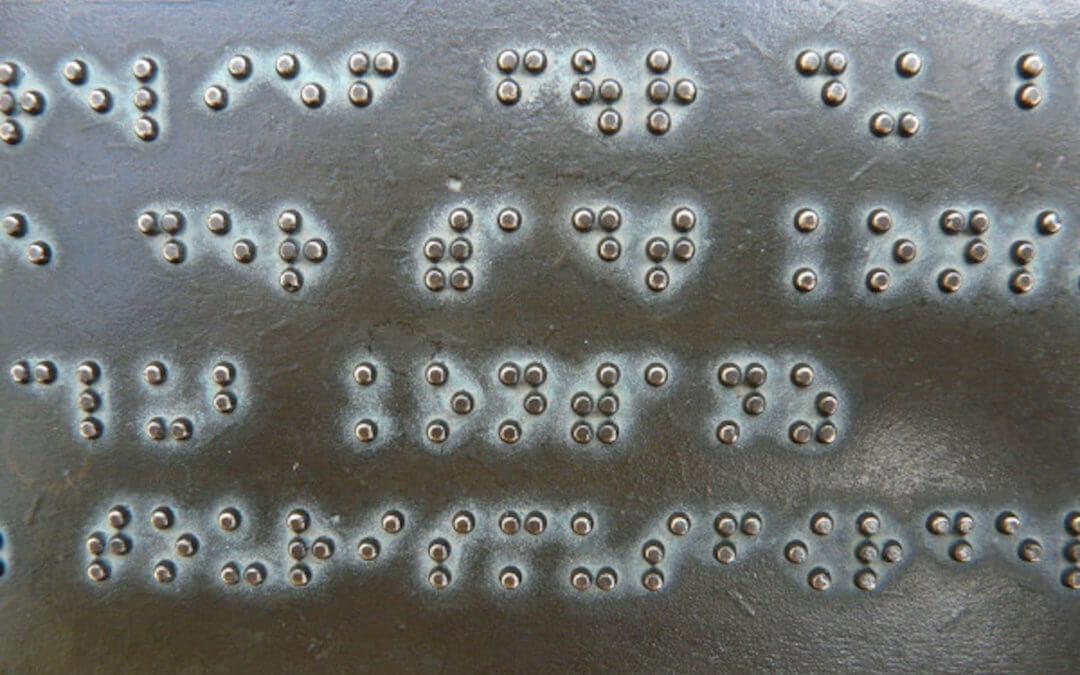
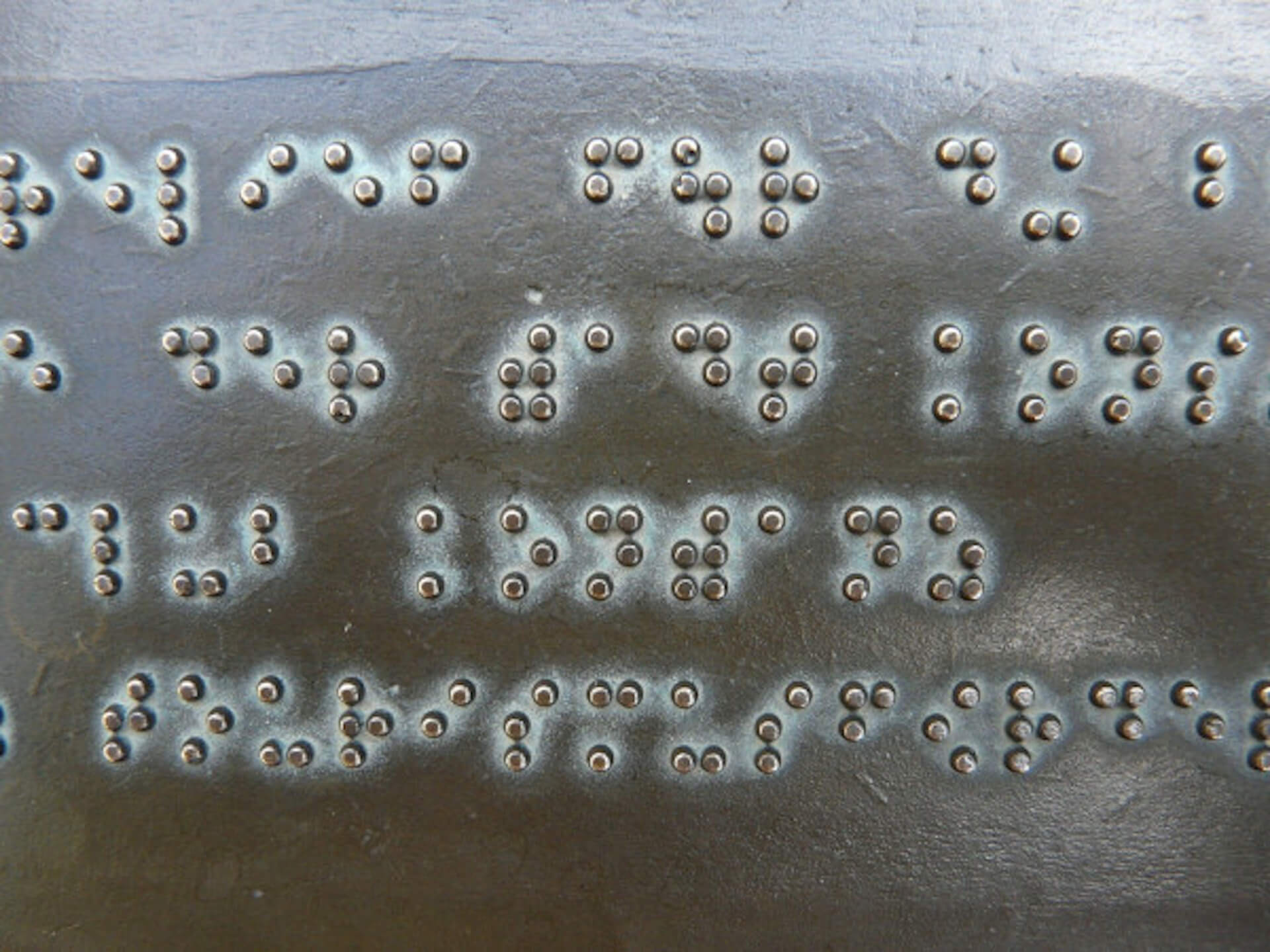
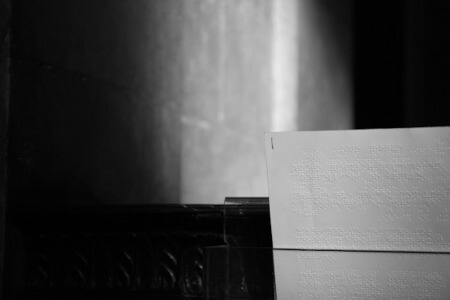


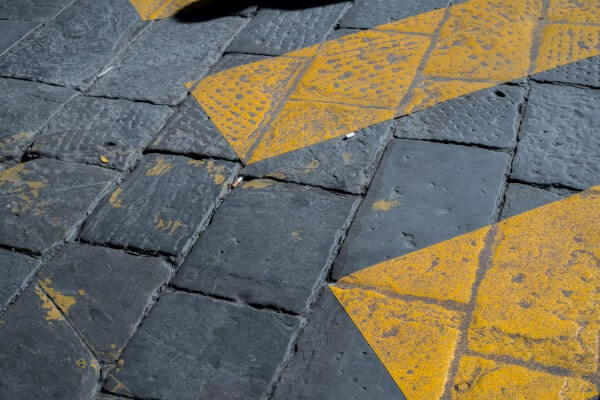


Recent Comments